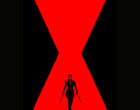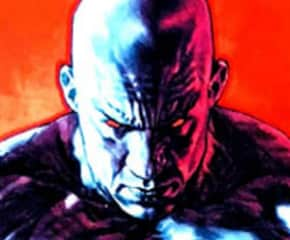Kirby's most brilliant brainchild of this (the mid-1960s) period, The Silver Surfer, first appeared in March 1966. He started out as an assistant to an awesome alien named Galactus, and Stan Lee had not originally expected him at all. The plot had been discussed, says Lee, but when Jack brought the drawings, I saw a guy on a flying surfboard and I said, "Who's this?" Jack said that Galactus ought to have a herald who flies ahead of him, and I thought it was a wonderful idea. I loved the way Jack drew him, and I thought there was something so noble about him that I'd decided I'd get a lot of philosophy in there, letting him deliver remarks about the condition of life on Earth and how we don't appreciate this Garden of Eden we live in."
The Silver Surfer seemed to be part angel, part alien, and the absurd but endearing idea of his surfboard was the perfect comic book touch. He returned again and again, gathering loyal readers and eventually earning his own title.
Best Selling Silver Surfer Merchandise
The Silver Surfer who symbolizes the highest aspirations of the spirit, also represents Marvel's most sincere
effort to elevate the super hero genre. This noble, contemplative, unselfish character is an anomaly in the
slam-bang world of comic books, and as such he has proven to be something of an acquired taste, a character
who appeals primarily to older and comparatively sophisticated readers.
Ironically enough, when
this benevolent alien first appeared he was working for one of the most terrifying villains in comics, the
godlike being known as Galactus. It was the Surfer's courageous decision to defy his master
that made him a hero, but for his pains he was condemned to spend his life on the planet Earth, denied all
access to the endless universe he loved to explore. There are parallels here to the Biblical fall of Adam,
who lost paradise in the exercise of his free will and thus was doomed to mortal misery. The Silver Surfer,
however was not tainted by original sin, and remained a detached, bemused observer of human folly. As a
symbol of limitless freedom dragged down to mundane reality, The Surfer was indeed a tragic figure, yet he
never lost his essential innocence.
The character first appeared in 1966, drawn by Jack Kirby as
an afterthought for a story that was already plotted; writer Stan Lee immediately fell in love with The
Silver Surfer, and for years would allow nobody else to create his inimitably high minded dialogue.
Eventually Lee and artist John Buscema invented a background for "The Sentinel of the Space ways," and
revealed that he was originally Norrin Radd, a restless inhabitant of a utopian planet.
When his race was threatened by the all-consuming Galactus , Norrin Radd saved the day by
offering to aid the menace in his endless quest for the worlds to devour. In sacrificing himself twice, once
for his own people, and again for humanity, The Silver Surfer took on Christ-like qualities. The
selflessness that made him so admired has finally been rewarded, and today he is free to soar among the
stars."
The Villain To Beat: Galactus!
Marvel menaces took a quantum leap in 1966 with the introduction of Galactus, a gigantic
alien being who feeds on the energy of planets and leaves them as lifeless husks. His approach to Earth in
Fantastic Four #48 inaugurated a three-issue adventure frequently cited as the finest
achievement of the collaboration between Stan Lee and Jack Kirby. Rarely had comic books attempted story
telling on such a scale.
Galactus was more than just an invader from another planet; he was an
extraordinary supernatural force beyond all human notions of good and evil, and Kirby consciously designed
him to look like a god. The concept grew as the story progressed. Says Lee: "I wasn't thinking about cosmic
grandeur - I was just looking for a stronger villain."
The mystical and metaphysical elements that
took over the saga were perfectly suited to the tastes of young readers in the 1960s, and Lee soon
discovered that "The Galactus Trilogy" was a favorite on college campuses. Both script and art emphasized
the awesome size of the universe as The Human Torch soared through endless galaxies on a rescue mission and
returned home almost insane; "We're like ants... just ants... ants!!"
Galactus was such an
impressive character that even his assistant, the rebellious Silver Surfer, had the stature to become a
major Marvel hero. Lesser villains had dreams of glory in which they hoped to rule the world, but to
Galactus, the planet was mere fast food."

 Shop Marvel
Shop Marvel


















































